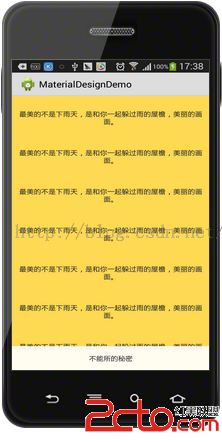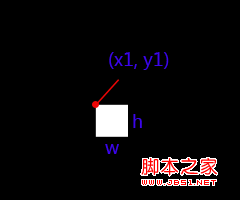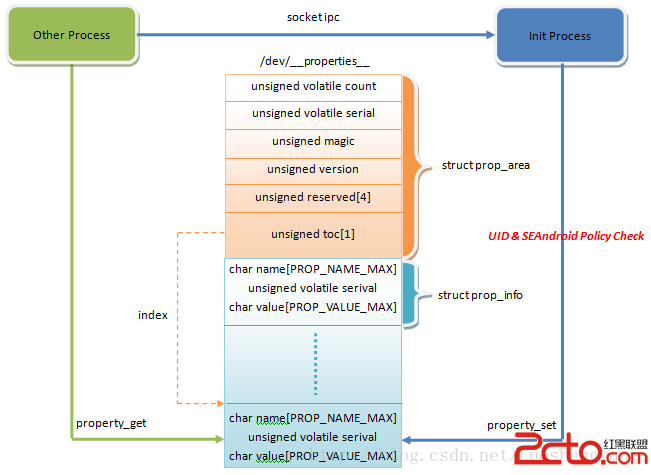編輯:關於Android編程
上一篇已經對ORMLite框架做了簡單的介紹:Android ORMLite 框架的入門用法~~本篇將介紹項目可能會使用到的一些用法,也為我們的使用ORMLite框架總結出一個較合理的用法。
通過上一篇的了解,我們使用ORMLite,需要自己寫一個DatabaseHelper去繼承OrmLiteSqliteOpenHelper,下面我們首先給出一個我認為比較靠譜的Helper的寫法:
package com.zhy.zhy_ormlite.db;
import java.sql.SQLException;
import java.util.HashMap;
import java.util.Map;
import android.content.Context;
import android.database.sqlite.SQLiteDatabase;
import com.j256.ormlite.android.apptools.OrmLiteSqliteOpenHelper;
import com.j256.ormlite.dao.Dao;
import com.j256.ormlite.support.ConnectionSource;
import com.j256.ormlite.table.TableUtils;
import com.zhy.zhy_ormlite.bean.Article;
import com.zhy.zhy_ormlite.bean.Student;
import com.zhy.zhy_ormlite.bean.User;
public class DatabaseHelper extends OrmLiteSqliteOpenHelper
{
private static final String TABLE_NAME = sqlite-test.db;
private Map daos = new HashMap();
private DatabaseHelper(Context context)
{
super(context, TABLE_NAME, null, 4);
}
@Override
public void onCreate(SQLiteDatabase database,
ConnectionSource connectionSource)
{
try
{
TableUtils.createTable(connectionSource, User.class);
TableUtils.createTable(connectionSource, Article.class);
TableUtils.createTable(connectionSource, Student.class);
} catch (SQLException e)
{
e.printStackTrace();
}
}
@Override
public void onUpgrade(SQLiteDatabase database,
ConnectionSource connectionSource, int oldVersion, int newVersion)
{
try
{
TableUtils.dropTable(connectionSource, User.class, true);
TableUtils.dropTable(connectionSource, Article.class, true);
TableUtils.dropTable(connectionSource, Student.class, true);
onCreate(database, connectionSource);
} catch (SQLException e)
{
e.printStackTrace();
}
}
private static DatabaseHelper instance;
/**
* 單例獲取該Helper
*
* @param context
* @return
*/
public static synchronized DatabaseHelper getHelper(Context context)
{
context = context.getApplicationContext();
if (instance == null)
{
synchronized (DatabaseHelper.class)
{
if (instance == null)
instance = new DatabaseHelper(context);
}
}
return instance;
}
public synchronized Dao getDao(Class clazz) throws SQLException
{
Dao dao = null;
String className = clazz.getSimpleName();
if (daos.containsKey(className))
{
dao = daos.get(className);
}
if (dao == null)
{
dao = super.getDao(clazz);
daos.put(className, dao);
}
return dao;
}
/**
* 釋放資源
*/
@Override
public void close()
{
super.close();
for (String key : daos.keySet())
{
Dao dao = daos.get(key);
dao = null;
}
}
}
2、我們對每個Bean創建一個XXXDao來處理當前Bean的數據庫操作,當然真正去和數據庫打交道的對象,通過上面代碼中的getDao(T t)進行獲取
getDao為一個泛型方法,會根據傳入Class對象進行創建Dao,並且使用一個Map來保持所有的Dao對象,只有第一次調用時才會去調用底層的getDao()。
package com.zhy.zhy_ormlite.db;
import java.sql.SQLException;
import android.content.Context;
import com.j256.ormlite.dao.Dao;
import com.zhy.zhy_ormlite.bean.User;
public class UserDao
{
private Context context;
private Dao userDaoOpe;
private DatabaseHelper helper;
public UserDao(Context context)
{
this.context = context;
try
{
helper = DatabaseHelper.getHelper(context);
userDaoOpe = helper.getDao(User.class);
} catch (SQLException e)
{
e.printStackTrace();
}
}
/**
* 增加一個用戶
* @param user
*/
public void add(User user)
{
try
{
userDaoOpe.create(user);
} catch (SQLException e)
{
e.printStackTrace();
}
}//...other operations
}
好了,基本了解了我們的代碼的結構~~ps:如果覺得不合理可以留言指出,如果覺得不能接收,直接忽略。。。
現在我們有兩張表一張User,一張Article;
Article中當然需要存儲User的主鍵,作為關聯~~那麼在ORMLite中如何做到呢?
可能有人會直接在Article中聲明一個int類型userId屬性,當作普通屬性處理搞定,這種做法並沒有做,但是沒有體現出面向對象的思想。
面向對象是這樣的:Article屬於某個User
類這麼定義:
package com.zhy.zhy_ormlite.bean;
import com.j256.ormlite.field.DatabaseField;
import com.j256.ormlite.table.DatabaseTable;
@DatabaseTable(tableName = tb_article)
public class Article
{
@DatabaseField(generatedId = true)
private int id;
@DatabaseField
private String title;
@DatabaseField(canBeNull = true, foreign = true, columnName = user_id)
private User user;
public int getId()
{
return id;
}
public void setId(int id)
{
this.id = id;
}
public String getTitle()
{
return title;
}
public void setTitle(String title)
{
this.title = title;
}
public User getUser()
{
return user;
}
public void setUser(User user)
{
this.user = user;
}
@Override
public String toString()
{
return Article [id= + id + , title= + title + , user= + user
+ ];
}
}
然後在User user屬性上添加: @DatabaseField(canBeNull = true, foreign = true, columnName = user_id)
canBeNull -表示不能為null;foreign=true表示是一個外鍵;columnName 列名
User類暫且就兩個屬性:
package com.zhy.zhy_ormlite.bean;
import com.j256.ormlite.field.DatabaseField;
import com.j256.ormlite.table.DatabaseTable;
@DatabaseTable(tableName = tb_user)
public class User
{
@DatabaseField(generatedId = true)
private int id;
@DatabaseField(columnName = name)
private String name;
public User()
{
}
public int getId()
{
return id;
}
public void setId(int id)
{
this.id = id;
}
public String getName()
{
return name;
}
public void setName(String name)
{
this.name = name;
}
@Override
public String toString()
{
return User [id= + id + , name= + name
+ ];
}
}
package com.zhy.zhy_ormlite.db;
import java.sql.SQLException;
import java.util.List;
import android.content.Context;
import com.j256.ormlite.dao.Dao;
import com.zhy.zhy_ormlite.bean.Article;
import com.zhy.zhy_ormlite.bean.User;
public class ArticleDao
{
private Dao articleDaoOpe;
private DatabaseHelper helper;
@SuppressWarnings(unchecked)
public ArticleDao(Context context)
{
try
{
helper = DatabaseHelper.getHelper(context);
articleDaoOpe = helper.getDao(Article.class);
} catch (SQLException e)
{
e.printStackTrace();
}
}
/**
* 添加一個Article
* @param article
*/
public void add(Article article)
{
try
{
articleDaoOpe.create(article);
} catch (SQLException e)
{
e.printStackTrace();
}
}
/**
* 通過Id得到一個Article
* @param id
* @return
*/
@SuppressWarnings(unchecked)
public Article getArticleWithUser(int id)
{
Article article = null;
try
{
article = articleDaoOpe.queryForId(id);
helper.getDao(User.class).refresh(article.getUser());
} catch (SQLException e)
{
e.printStackTrace();
}
return article;
}
/**
* 通過Id得到一篇文章
* @param id
* @return
*/
public Article get(int id)
{
Article article = null;
try
{
article = articleDaoOpe.queryForId(id);
} catch (SQLException e)
{
e.printStackTrace();
}
return article;
}
/**
* 通過UserId獲取所有的文章
* @param userId
* @return
*/
public List listByUserId(int userId)
{
try
{
return articleDaoOpe.queryBuilder().where().eq(user_id, userId)
.query();
} catch (SQLException e)
{
e.printStackTrace();
}
return null;
}
}
public class OrmLiteDbTest extends AndroidTestCase
{
public void testAddArticle()
{
User u = new User();
u.setName(張鴻洋);
new UserDao(getContext()).add(u);
Article article = new Article();
article.setTitle(ORMLite的使用);
article.setUser(u);
new ArticleDao(getContext()).add(article);
}
public void testGetArticleById()
{
Article article = new ArticleDao(getContext()).get(1);
L.e(article.getUser() + , + article.getTitle());
}
public void testGetArticleWithUser()
{
Article article = new ArticleDao(getContext()).getArticleWithUser(1);
L.e(article.getUser() + , + article.getTitle());
}
public void testListArticlesByUserId()
{
List
articles = new ArticleDao(getContext()).listByUserId(1); L.e(articles.toString()); }
主要看第三個:通過Id獲取一個Article且攜帶User,testGetArticleWithUser(id)
如何值傳一個Article的Id,然後能夠拿到Article對象,且內部的user屬性直接賦值呢?
兩種方式:
1、即上述寫法
article = articleDaoOpe.queryForId(id); helper.getDao(User.class).refresh(article.getUser());
添加foreignAutoRefresh =true,這樣;當調用queryForId時,拿到Article對象則直接攜帶了user;
每個User關聯一個或多個Article,如果我在User中聲明一個Collection
articles,我能否在查詢User的時候,一並能夠獲取到articles的值呢?
答案是可以的。在User中添加如下屬性,且注解如下:
@ForeignCollectionField
private Collection
我們在UserDao中書寫查詢User的代碼:
public User get(int id)
{
try
{
return userDaoOpe.queryForId(id);
} catch (SQLException e)
{
e.printStackTrace();
}
return null ;
}
public void testGetUserById()
{
User user = new UserDao(getContext()).get(1);
L.e(user.getName());
if (user.getArticles() != null)
for (Article article : user.getArticles())
{
L.e(article.toString());
}
}
輸出:
09-07 22:49:06.484: E/zhy(7293): 張鴻洋 09-07 22:49:06.484: E/zhy(7293): Article [id=1, title=ORMLite的使用]可以看到,我們通過一個queryForId,成功的獲取了User,以及User關聯的所有的Articles;
上述代碼其實已經用到了簡單的條件查詢了:
1、簡單的where等於
articleDaoOpe.queryBuilder().where().eq(user_id, userId).query();直接返回Article的列表
2、where and
QueryBuilder queryBuilder = articleDaoOpe .queryBuilder(); Where where = queryBuilder.where(); where.eq(user_id, 1); where.and(); where.eq(name, xxx); //或者 articleDaoOpe.queryBuilder().// where().// eq(user_id, 1).and().// eq(name, xxx);
3、更復雜的查詢
where.or( // where.and(// where.eq(user_id, 1), where.eq(name, xxx)), where.and(// where.eq(user_id, 2), where.eq(name, yyy)));
好了,再復雜的查詢估計也能夠湊出來了~~
使用queryBuilder是因為我們希望執行完成查詢直接返回List
對於Update我們並不關注返回值,直接使用
articleDaoOpe.updateRaw(statement, arguments);傳入sql和參數即可~~
何必在那articleDaoOpe.updateBuilder().updateColumnValue(name,zzz).where().eq(user_id, 1);這樣的痛苦呢~~~
同理還有deleteBuilder還是建議直接拼寫sql,當然很簡單的除外,直接使用它的API~
在我們的Dao中直接寫如下代碼:
//事務操作 TransactionManager.callInTransaction(helper.getConnectionSource(), new Callable() { @Override public Void call() throws Exception { return null; } });
1、當Bean繼承BaseDaoEnabled時,可以使用bean.create(bean);bean.update(bean)一類操作
例如:
Student extends BaseDaoEnabled
Dao dao = DatabaseHelper.getHelper(getContext()).getDao(Student.class);
Student student = new Student();
student.setDao(dao);
student.setName(張鴻洋);
student.create();
前提dao需要手動設置,如果dao為null會報錯,尼瑪,我覺得一點用沒有。。。
2、Join
QueryBuilder articleBuilder = articleDaoOpe .queryBuilder(); QueryBuilder userBuilder = helper.getDao(User.class).queryBuilder(); articleBuilder.join(userBuilder);
本篇主要想介紹在項目中如何寫DataBaseHelper已經如何寫BeanDao,以及列出了在項目中可能會用到的ORMLite的功能,如果需要詳細了解,還請看ORMLite官方文檔,源碼中也會提供~~
 Android控件之SlidingDrawer(滑動式抽屜)詳解與實例分享
Android控件之SlidingDrawer(滑動式抽屜)詳解與實例分享
SlidingDrawer效果想必大家也見到過,它就是1.5模擬器上進入應用程序列表的效果。下面是截圖一、簡介 SlidingDrawer隱藏屏外的內容,並允
 android仿IOS,滑動隱藏底部ScrollView
android仿IOS,滑動隱藏底部ScrollView
在我們開發android app時,會有很多效果都需要模仿IOS,最近在做一個頁面時,其中用到了 ScrollView,但要做成IOS那種在ScrollView滑動時,浮
 android圖像繪制(七)ClipRect局部繪圖/切割原圖繪制總結
android圖像繪制(七)ClipRect局部繪圖/切割原圖繪制總結
雜語:看了很多程序猿都有寫博客的習慣,看來我也得練練,不管寫的好不好了,學到點什麼體會就寫寫吧。內容解說:這幾天開始學游戲地圖制作,今天小小的總結一下Canvas的cli
 SEAndroid安全機制對Android屬性訪問的保護分析
SEAndroid安全機制對Android屬性訪問的保護分析
Android系統通過屬性暴露設備和運行時信息,並且可以通過設置屬性來控制系統行為。因此,屬性也像文件一樣,是一種需要保護的資源。在啟用SEAndroid之前,敏感屬性只